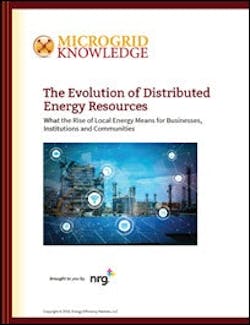We are in the midst of an evolution toward a more decentralized power grid, a shifting away from electricity delivered via large central power plants and long transmission lines to more distributed energy resources (DER).
The new paradigm calls for use of local resources, such as rooftop solar, small natural gas generators and microgrids that combine several electricity solutions. Rather than being in another city or even state, these are resources located within neighborhoods, businesses, college campuses, hospitals and government complexes—near the communities they serve.
But the significance of this reconfiguration extends beyond geography. It can change who’s in charge of electric power. Once almost solely the domain of utilities, electricity now can be generated and controlled by independent companies, as well as those who use it.
This report makes plain the complexities involved in capturing DER benefits. Some of the most significant advantages occur within wholesale energy market transactions, a complex arena best pursued with guidance from experts in the space.
“The Evolution of Distributed Energy Resources: What the Rise of Local Energy Means for Businesses, Institutions and Communities,” courtesy of NRG, is timely, given the pace of change in energy technology and lack of knowledge among energy users about new possibilities.
